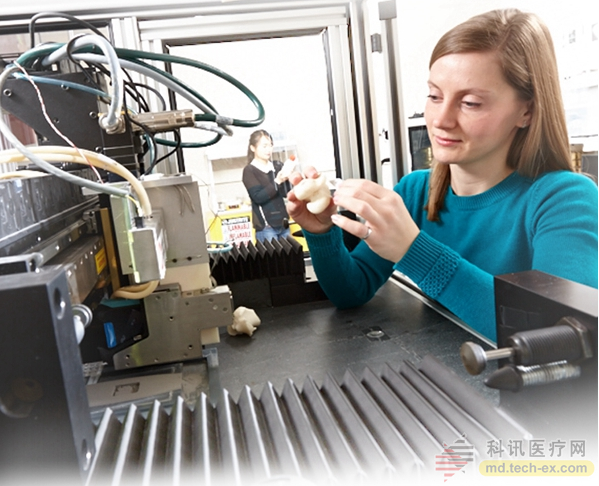Release date: 2016-02-29
Anyone with joint disease can deeply understand the pain and inconvenience caused by joint damage. For patients with severe joint injuries, doctors typically treat damaged bone tissue and hoses and replace them with artificial joints made of alloys or polymers. But if these implants need to be replaced after a few years, the patient's condition will get worse. Generally, metal joints can only be used for 10 to 15 years.
Recently, Mihaela Vlasea, a postdoctoral researcher at the University of Waterloo in Canada, explored an innovative way to solve this flawed joint replacement. This approach involves the development of custom implants using calcium phosphate powder as a material using a 3D printer.
Most importantly, this 3D printed implant is not only similar in appearance to bone, but also bioabsorbable – the body can use it to create new bones. 
It is understood that Vlasea is a key member of the team of researchers led by Ehsan Toyserkani, a mechatronics professor at the University of Waterloo. She said that she has been working on this project for the past six years, and the progress she has made is exciting and challenging.
“In order to get a Ph.D., I designed an additive manufacturing machine (ie 3D printer) from scratch. It was really difficult. I felt that I couldn’t do it a few times.†The mechatronics engineering graduate Life now admits. "But with other team members, I have seen the direction of this project, and this prospect is exciting." 
During the study, the research team collaborated with orthopaedic surgeons, pathologists at the Mount Sinai Hospital in Toronto, and materials experts at the University of Toronto Dental Department, which brought calcium phosphate and knowledge of how to heat treat it. .
Vlasea developed this 3D printer using powder deposition technology to build objects by selectively curing the calcium phosphate powder layer, but the objects just printed in 3D are fragile and require baking to fully solidify.
Once completed, the print can be implanted into the body like other implants. But the later things are different. This material has proven to be highly compatible with bones. Therefore, the body can grow new bone directly in its implant! Eventually, the implant disappeared and was completely replaced by the real bone. This opens the door to a complete cure for joint diseases.
To date, Vlasea has produced two sheep implants that will soon enter the human experimental phase.
Source: Bio 360
YT-H711
YT-H711
Shenzhen Sunshine Technology Co.,Ltd , https://www.yatwin.com